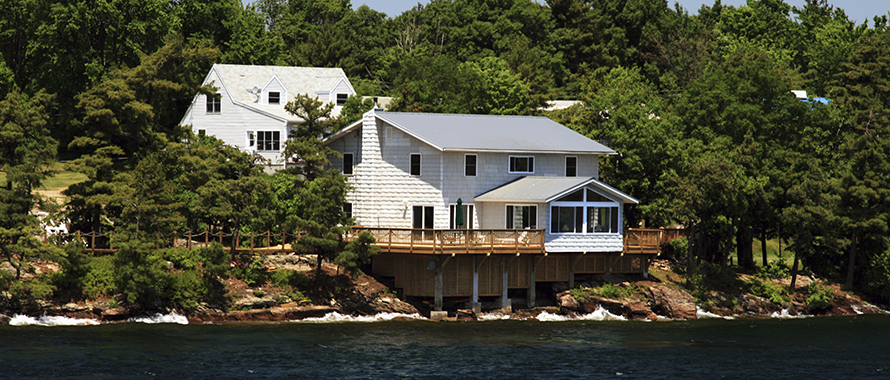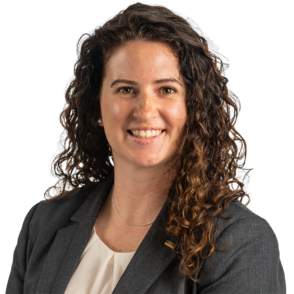Over the last year, the Homeowners & Dwellings insurance market has experienced an increase in claims, specifically for historic and catastrophic events.
Consider:
- The national Oceanic Atmospheric Administration’s Climate Prediction Center indicated in early August that the Atlantic hurricane season is on pace to become one of the worst in recorded history. As of September 2, there was already an estimated $5.76 billion in damages from three storms, mostly from Hurricane Laura.
- Massive fires in multiple states from Florida to Colorado to the West Coast caused by extreme heat, wind storms and topography have resulted in the second and third largest fires ever recorded in California this year. In 2017 a U.S. Department of Commerce study indicated that the total annualized cost of wildfires ranges from $71.1 billion to $347.8 billion.
- There was a record number of tornadoes in the U.S. in April – 351 in total according to theNational Weather Service Storm Prediction Center.
Floods, windstorms, hurricanes and wildfires, and the ever-increasing number of claims associated with these catastrophic events, have resulted in many carriers incurring massive losses. In short, the insurance market is feeling the financial effects, which is the single largest reason for higher premiums, fewer options and in some cases, limited inventory.
With many Homeowners policies becoming more complex, a higher burden is placed on consumers to make smart purchase decisions that provide the level of coverage required to protect against a catastrophic claim.
Policyholders working with an experienced insurance broker or agent who understands the market and can provide sage advice to help them remain insurable with affordable premiums and multiple options is critical in such an evolving market.
Wildfires Overview
The last decade has seen some of the most destructive wildfires in U.S. history and 2020 is no different. As of August 31, there have been 39,829 wildfires year-to-date that have burned nearly 4 million acres. Furthermore as of the end of August there were 81 large active and uncontained fires and three contained fires across 14 states. Almost every U.S. wildfire resource is currently committed to incidents and that they are seeking assistance from international partners according to the Center for Disaster Philanthropy.
California’s Carr Fire in 2018 was said to have been started by the spark of a trailer tire blowout. It destroyed an estimated 1,000 homes, burning 154,000 acres alone. Other fires in California that summer burned over one million combined acres. The 2016 Gatlinburg, Tennessee fires forced the evacuation of 14,000 people with more than 1,700 structures destroyed.
These and plenty of other wildfires have altered the willingness of many carriers to offer such policies. Many California residents and Americans in other high-risk areas have experienced non-renewals for Wildfire policies in recent years. Rates have increased an estimated 15 percent from one year ago. The significant amounts of claims paid on wildfires over this time have also forced carriers to change their distribution model in a way that further spreads risk.
As with other catastrophic policies, more data is available today to help actuaries identify what those risk factors may be. With wildfires the process includes a concentration of more rural or wooded high-risk areas where vegetation is plentiful and wind is common. New lessons are being learned annually that change how risk is assessed. Yet with wildfire, predictive models are less reliable. Unlike hurricanes and other storms, a fire can start in any number of places for a wide variety of reasons with little to no warning.
Even with COVID-19 and media attention diverted elsewhere, it has been a very active wildfire season in 2020 with significant fires in states like Florida, Arizona and California. While those fires have not impacted as large of an area as some of the more notable ones listed above, the market is expected to stay relatively tight with higher premiums and fewer options over at least the next 12-18 months.
Loss of Use, which covers any additional living expenses that exceed what you normally spend because of a catastrophic incident, can pay for hotel and rental fees when a family is displaced. Yet an increase in these claims are pushing premiums higher.
There are steps that homeowners can take to partially mitigate the threat of wildfire. Proper landscaping that rids your property excess brush is helpful. The slope of a house, how it was constructed, when it was built and how close it is located to a fire station can all impact policy options and pricing as well.
Burns & Wilcox is the first wholesaler in the industry to have partnered with Wildlife Defense Systems (WDS), which gives policyholders access to its full suite of wildfire-prevention and mitigation services. WDS is the largest private-sector wildfire service in the country providing a full range of services from loss prevention and response to wildlife education. It can proactively support high-risk areas with resources, fire prevention personnel and beneficial tools such as sprinklers, fire-blocking materials, ground-applied flame retardant, and more.
Wildfire is covered by most Homeowners policies. Homeowners though need to make sure they have adequate insurance limits on their home, and that there isn’t a separate wildfire deductible required, as those are beginning to be prevalent in some markets. As a result the most important things homeowners can do is work with an agent or broker who understands options for those in high-risk wildfire areas.
Coastal (Hurricanes) Overview
The market has tightened since the start of 2020 for homes with coastal exposures, which are most frequently impacted following a hurricane. This most commonly occurs on the Atlantic seaboard and along the Gulf Coast where hurricanes have been prevalent in recent years. Based on the demand for such policies, many carriers have a saturated supply of Homeowners coverage in their portfolios, and no longer have the necessary capacity to offer it to clients in such coastal areas as Southern and Eastern Florida, North and South Carolina, parts of Texas, Louisiana and Alabama. The premiums for these policies have commonly experienced increases of five to 25 percent over the first six months of 2020.
Despite the number of named hurricanes or tropical storms that impacted the U.S., few leading into 2020 had been large enough over the last decade to make a significantly adverse impact on premiums and availability. This has given the Excess & Surplus (E&S) market more reasons to provide multiple options. Whether this will remain true following the 2020 hurricane season is unclear given the high number of named storms including Hurricane Laura, and predictions of an active year.
Carriers often use “tiers” when providing Wind coverage using predictive modeling strategies. Tier one being the closest tier to the coastline and typically the highest risk. Tiers two, three, etc. continue inland and are defined by an array of complex data as well as mileage from the seaboard. Placing homeowners into these tiers helps carriers manage risk assessments.
Given the challenges with current supply, there are steps that residential homeowners can take to help mitigate their risk, possibly opening them up to more options and affordable premiums. Newer homes often have features that provide additional protection because of improved technologies instituted by homebuilders. Homes with new, stronger roofs may receive credits, for example. Credits may also be applied to homeowners whose properties include a “hip” roof design, where all roof sides slope downward over the walls of a home; roof clips; windows with impact glass that can withstand winds up to a certain MPH level; and hurricane shutters.
There are three different wind-related deductibles that many homeowners will want to consider. A Wind/Hail deductible may be used when there is a wind or hail event that causes significant damage. A Named Storm deductible should be reviewed as a possibility for insured clients living in coastal areas because it is only utilized with the National Weather Service names a storm whether it is a hurricane or tropical storm. A Hurricane deductible applies to only hurricanes that are named by the National Weather Service. In the event there is a bad wind/hail event that is not named and the insured has a Named Storm or Hurricane deductible, the All Other Peril deductible would typically be impacted.
Flood Overview
Flood is a separate coverage that is usually excluded from a Homeowners policy. The increase in predictive analysis tools is starting to allow carriers to evaluate flood risk more appropriately, which in turn has altered the availability and cost of coverage. Risk can now be defined at specific properties rather than over general flood areas or plains. As modeling and data has become more predictive, there has been a greater increase in product availability, leading to increased competition and price relief in some segments.
Traditionally the National Flood Insurance Program (NFIP), administered by FEMA, has provided flood insurance to Americans based on a fairly standard formula that for roughly five decades was generally more affordable than private insurance options. Subsidies started to become harder to secure around 2012 just as many carriers began using advanced data to mitigate portfolio risk. As a result, private insurance options are increasingly more price and option competitive. As many as 40 new carriers have entered the private flood insurance market since 2017-18. In other words consumers in the U.S. have more flood coverage options available now than perhaps at any other time.
In fact data modeling is so readily available that carriers can accurately predict expected water levels at a granular level as small as 3 meters of area. In-person assessments are now used less frequently by carriers with the application of these tools allowing precision and ease of quoting. This application of data allows the insured savings on physical surveys and a smoother process to obtain flood coverage.
Homeowners in coastal regions are still generally considered to be at higher risk compared to being located near inland lakes and rivers. Rising water levels also have a greater effect on coastal regions. Property owners living near freshwater lakes and rivers will be particularly impacted by the available information on nearby dams or levies protecting communities and neighborhoods. Midwestern communities in such states as Indiana, Ohio, Michigan, Iowa and more in particular have inland bodies of water that typical rely on working dams and levees.
Policyholders in high-risk, coastal areas can help mitigate some risk by ensuring their structure is elevated above expected flood water levels. Flood vents can be installed to safely support water flow in a way that limits damage to the structure. Breakaway walls within a structure’s first floor enclosure can also help prevent a structure from being completely knocked over, which carriers can look at favorably. It should be noted that these types of strategies should be implemented when the building or home is being constructed, as doing so after construction is often cost prohibitive.
Even if a structure is not considered to be in a flood zone, homeowners should review their coverage to help avoid a large financial liability. In 2019 about 30 percent of all flood claims were in “safe” areas, where an unexpected flood occurred. Homeowners of high-value homes in particular should evaluate their actual exposure because if they are not insured to proper limits, they might be burdened with a significant loss, exceeding the coverage offered by a standard NFIP flood policy limit.
It should be noted that most Homeowner’s policies in the U.S. explicitly exclude flood as a covered peril, leading to the misconception many homeowners have that losses incurred because of a flood would be covered directly by their existing policy.
Clients should also consider Content Coverage, an optional coverage on a primary flood policy. The NFIP will offer up to $100,000 contents coverage for a dwelling, while a private flood policy can typically offer extended limits beyond that level up to the replacement cost value of the contents, which is always the goal. This means that homeowners document the value of their content housed.
Our recommendation is to always consider Content Coverage, especially for a primary residence or any home where there is a high concentration of contents value. Most insured clients should consider fully insuring their contents, if possible, as personal contents are typically the most severe risk to a property in a flood scenario. There are also additional options within the private space to include contents coverage in a basement, which the NFIP excludes. Most options for this coverage are affordable and widely available.
Depending on the carrier and the level of risk of a policyholder, wind may or may not be included in the primary Homeowners policy, so it is imperative to work with an experienced broker that provides you with the necessary options to help protect your property.
It is important to remember that one of the main goals of having a Homeowners Policy is to recover what the homeowner had prior to a major, often catastrophic event such as a fire, flood or other unforeseen event. Insureds should know their replacement costs, and work with an experienced insurance broker to plan their deductibles and coverages accordingly.
Contributors: Bill Gatewood, Corporate Senior Vice President, National Personal Insurance Practice Leader, Burns & Wilcox; Brad Turner, National Product Manager, Flood, Burns & Wilcox; Anella Niewenhous, Associate Vice President, Regional Practice Group Leader, Personal Insurance, Burns & Wilcox; Ian Hanson, Associate Vice President, Underwriting Director, Burns & Wilcox
This commentary is intended to provide a general overview of the issues contained herein and is not intended, nor should it be construed, to provide legal or regulatory advice or guidance. If you have questions or issues of a specific nature, you should consult with your own risk, legal, and compliance teams.









